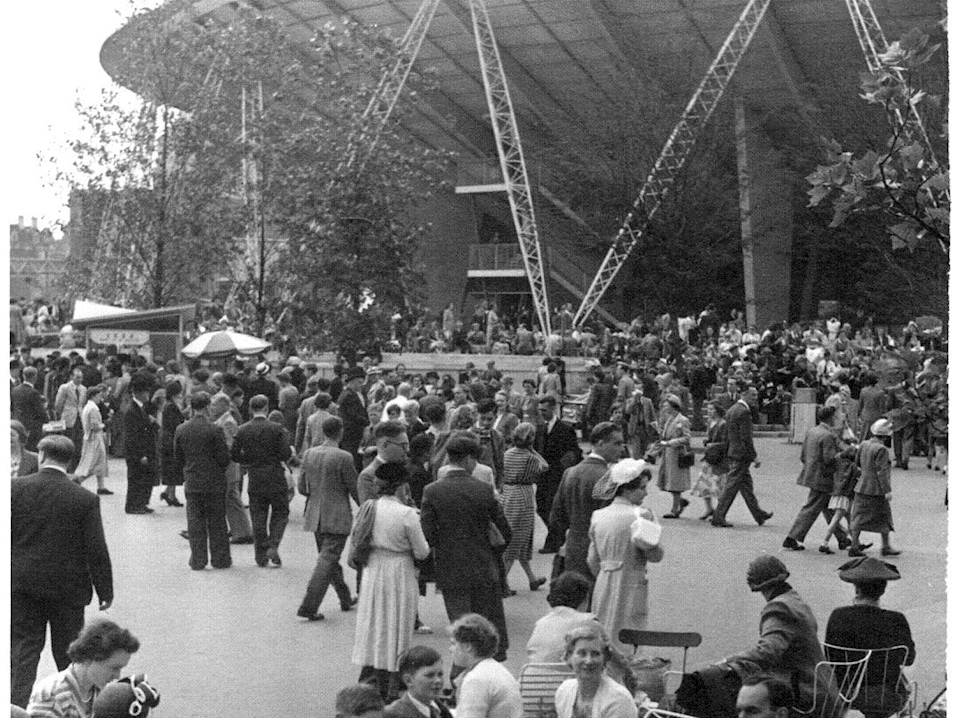By John Taylor
Some readers, may recall with nostalgia the Festival of Britain, perhaps attend-ing the main events at the South Bank London, or going to the funfair at Bat-tersea. It was in 1951, just six years after the end of World War Two, that the event was held to celebrate the British contribution to civilization, past, present and future, in the arts, science and technology, and industrial design. Much of the city still lay in ruins after the war, and models of redevelopment were needed. The Festival was an attempt to give the country a feeling of recovery and progress. The Festival of Britain described itself as “One act of na-tional reassessment and one corporate reaffir-mation of faith in the nation’s future”.
The first idea for an exhibition came from The Royal Society of Arts in 1943, which considered that a celebration should be held to commemorate the centenary of the 1851 Great Exhibition. Funded mostly by the gov-ernment with a budget of £12 million, in 1947, cabinet member Herbert Morrison took charge, and a planning council was estab-lished. The main site was constructed on a 27 acre plot on the South Bank of the Thames in Lambeth, which had been left untouched since being bombed in the war. Old Victorian buildings and railway sidings were trans-formed into the new site.
Following an official opening by King George V1, the festival opened for the public on the 4th May. The centre piece was the re-cently built Royal Festival Hall. The main ground site featured the largest dome in the world at the time, standing 93 feet tall, with a diameter of 365 feet. This held displays on the theme of discovery such as The New World, Polar Regions, The Sky, Outer Space, The Living, and The Physical World. Adjacent to The Dome was the Skylon, a vertical cigar shaped steel tower support-ed by cables. There was the Tele cinema, which showed films in 3D, and other displays to be seen were The People of Brit-ain, Homes and Gardens, Health, Sport, and The Seaside. The event show-cased the principles of urban design that would feature in the crea-tion of new towns. Other exhibits included The Land of Britain, The Natural Scene, Pow-er and Production, and Transport. A Festival of Science, was held at the Science museum Kensington, and a Festival of Architecture at the Lansbury Estate in Poplar.
The Pleasure Gardens Battersea, were created a few miles from the festivals main ground. This included an amusement park, a miniature railway, foaming fountains, a wine garden, a pavilion with a stage, and an amphitheatre, seating 1,250 people, which was later changed into a circus. The Battersea Funfair closed in the mid 1970’s. Although the main site was in the capital, events were also held nationwide, including an Industrial Power presentation in Glasgow, and the Ulster Farm and Factory Fair in Belfast. Throughout the summer months, the ship Campania toured the coast of Britain with a smaller representa-tion of the festival experience.
The occasion had been a success, and there were over eight million visitors to the South Bank during a period of five months. At the closing ceremony in September, massed bands of the Brigade of Guards played as the Union, and Festival flags were taken down for the last time. The 2,900 seat Royal Festival Hall, is the only feature to remain from the festival and is now a Grade 1 listed building. It is still hosting concerts and other events to this day, and is an enduring reminder of the events that were held beside the Thames in that bygone summer of 1951.

